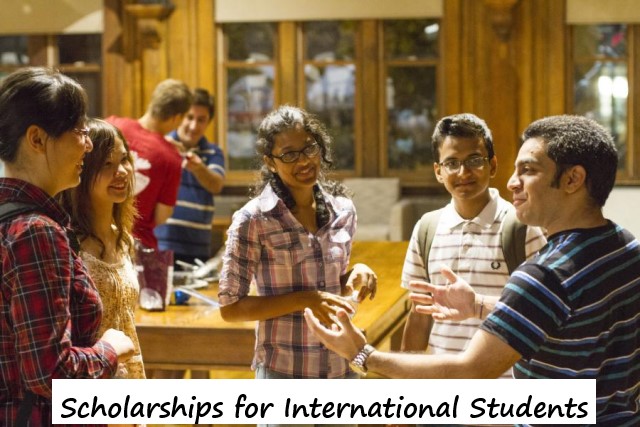It’s not just universities that need to be assessed. That’s why https://chubbyparade.com/ we’ve developed this list of the best high schools in the world, to help you identify the best institutions for your children at an early age.
High-ranking schools have small class sizes, no larger than 20 students per teacher, with a student/teacher ratio between 5:1 and 15:1. The top schools had 98% or higher graduation rates and 100% proficiency in mathematics. The quality of education received by students enrolled in the best high schools in the world certainly has a lot of positive influence on their academic performances when they get into tertiary institutions.
What Are The Best Public High Schools in the World?
- Walton Payton College Preparatory High School.
- School for Advanced Studies (SAS).
- Merrol Hyde Magnet School.
- Thomas Jefferson High School for Science and Technology.
- Academic Magnet High School.
- The Davidson Academy of Nevada.
- Hilton College
- St. George’s College
- International School of Kenya
- Westminster School.
- Tonbridge School.
- Chavagnes International College
- Grey College
- St. John’s College.
- Rift Valley Academy
- Accra Academy.
How Is A High School Classified As Good?
- Conducive Learning Environment: Good high schools have conducive Learning environments. Students are taught in peaceful and learning-friendly environments.
- Extracurricular Activities: A Good School must encourage extracurricular activities like sports, and skill acquisition.
- Professional Teachers: Best high schools have adequate professional teachers. Teachers must possess the right educational qualification and experience.
- Excellent Performance In Standardized Examinations: A Good School must have a record of excellent performance in standardized exams like IGCSE, SAT, ACT, WAEC e.t.c.
20 Best High School In The World 2023 | Best Private and Public High Schools
Are Public High Schools Free?
Most Public High Schools don’t charge tuition. Students will have to pay for other fees like transportation, uniform, books, and hostel fees.
Does High Schools provide scholarships?
A lot of high schools provide scholarship opportunities to students that are academically sound and have financial needs.
Which country has the best high schools?
United States is home to most of the best high schools in the World. Also, US is known to have the best education system.
What is the hardest high school to get into?
International Academy, Stanton College Prep
Top 20 Best High School In The World 2023
1. Westminster School – London
Westminster School is an independent boarding and day school, located in the heart of London. It’s one of the ancient and leading academic schools in London. Westminster School only admits only boys to the under school at the age of 7 and senior school at the age of 13, Girls join the sixth form at the age of 16.
2. School for Advanced Studies (SAS) – United States
School for Advanced Studies is a product of a combined effort between Miami-Dade County Public Schools (MDCPS) and Miami Dade College (MDC). At SAS, students complete the last two years of high school (11th and 12th grade) while they obtain a two-year Associate in Arts degree from Miami Dade College.
3. The Davidson Academy of Nevada – United States
The Academy offers an in-person learning option and an online learning option. Unlike traditional school settings, Academy classes are organized by ability, not by age. The Davidson Academy of Nevada is the only high school in the Davidson Academy School District.
4. Academic Magnet High School (AMHS) – USA
Students are admitted to AMHS based on GPA, standardized test scores, a writing sample, and teacher recommendations. Academic Magnet High School is part of the Charleston County School District.
5. St. John’s College – South Africa
St. John’s College is a world-class Christian, African day and boarding school. The School accepts only boys from Grade 0 to Grade 12 into the Pre-preparatory, Preparatory, and the College accepts boys and girls in the Bridge Nursery School and Sixth form.
6. International School of Kenya (ISK) – Nairobi, Kenya
International School of Kenya is a private, non-profit Pre K – Grade 12 school. ISK is a product of a joint partnership between the governments of the United States and Canada. International School of Kenya offers high school (Grades 9 to 12) and Grades 11 and 12 International Baccalaureate (IB) Diploma programs.
7. Chavagnes International College – Chavagnes-en-Paillers, France
Chavagnes International College is a boys’ catholic boarding school in France. Admissions to Chavagnes International College are based on satisfactory references from teachers and academic performances. Chavagnes International College offers a classical education aimed at the boys’ spiritual, moral, and intellectual growth by providing British and French education.
8. Grey College – Bloemfontein, South Africa
Grey College is a semi-private English and Afrikaans medium school for boys. It’s one of the top and most academic schools in the Free State province. Also, Grey College is among the best-known schools in South Africa.
9. St. George’s College – Harare, Zimbabwe
St. George’s College is the most renowned boy’s school in Zimbabwe. Admission into St. George’s College is based on an entrance examination, that must be taken to enter Form One. ‘A’ grades at the Ordinary (O) level are required to enter the lower sixth form. St. George’s College follows the Cambridge International Examination (CIE) syllabus at IGCSE, AP, and A levels.
10. Accra Academy – Accra, Ghana
Accra Academy is a non-denominational day and boarding boys’ school. The Academy was established as a private secondary educational institution and later gained the status of a Government-assisted school. Accra Academy is one of the 34 schools in Ghana established before Ghana attained its Independence from Britain.
15 Best mfa Creative Writing Programs 2023 | Schools for Creative Writing in the World
11. Leysin American School (LAS) – Switzerland
Leysin American School is a coeducational independent boarding school focusing on university preparation for grades 7 to 12. LAS provide students with International Baccalaureate, AP, and diploma programs.
12. Notre Dame International High School – Verneuil-sur-seine, France
Notre Dame International High School is an American international school in France. It provides bilingual, college preparatory academics to students in grades 10 to grades 12. The School has an opportunity for non-France speakers to learn the French language and culture. Students are taught with an American curriculum.
13. Ascham School – Australia
Ascham School is an independent, non-denominational, day and boarding school for girls. Ascham School uses Dalton Plan – a secondary-education technique based on individual learning. Currently, Ascham is the only school in Australia using the Dalton Plan.
14. Sydney Grammar School (SGS) – Australia
Sydney Grammar School is an independent secular day school for boys. Sydney Grammar School is one of the oldest schools in Australia. Applicants go through an entrance assessment before they can be admitted to SGS. Priorities are given to students from St. Ives or Edgecliff preparatory schools.
15. Phillips Academy – Andover – Massachusetts, USA
Phillips Academy is an independent, co-educational secondary school for boarding and day students. Phillips Academy started as an only boys school and became coeducational when it merged with Abbot Academy. As a highly selective school, Phillips Academy only accepts a small percentage of applicants.
16. Geelong Grammar School (GGS) – Geelong, Victoria, Australia
Geelong Grammar School is an independent Anglican co-educational boarding and day school. GGS offers an International Baccalaureate (IB) or the Victorian Certificate of Education (VCE) to senior students.
17. The Hotchkiss School – Lakeville, Connecticut, USA
The Hotchkiss School is an independent boarding and day school, that accepts students in grades 9 to 12 and a small number of postgraduates. The Hotchkiss School started as an only boys school and later became coeducational.
18. Thomas Jefferson High School for Science and Technology (TJHSST) – Virginia, US
Thomas Jefferson High School for Science and Technology is a Virginia state-chartered magnet school operated by Fairfax County Public Schools. TJHSST offers a comprehensive program that focuses on scientific, mathematical and technological fields.
19. Merrol Hyde Magnet School (MHMS) – Tennessee, United States
Merrol Hyde Magnet School is the only magnet school in Sumner County. Unlike other traditional academic schools, Merrol Hyde Magnet School utilizes the Paideia philosophy. Paideia is not a strategy for teaching but rather a philosophy of educating the whole child – mind, body, and spirit.
20. Tonbridge School – England
Tonbridge School is one of the leading boys’ boarding schools in the UK. The School offers traditional British education up to GCSE and A levels. Students are admitted to Tonbridge School based on a standard common entrance exam.
Conclusion
When it comes to the best high schools in the world, we hope you’ve been informed after reading our article. Whether you are planning to attend a private or public high school, just make sure you select a school that provides high-quality education.









